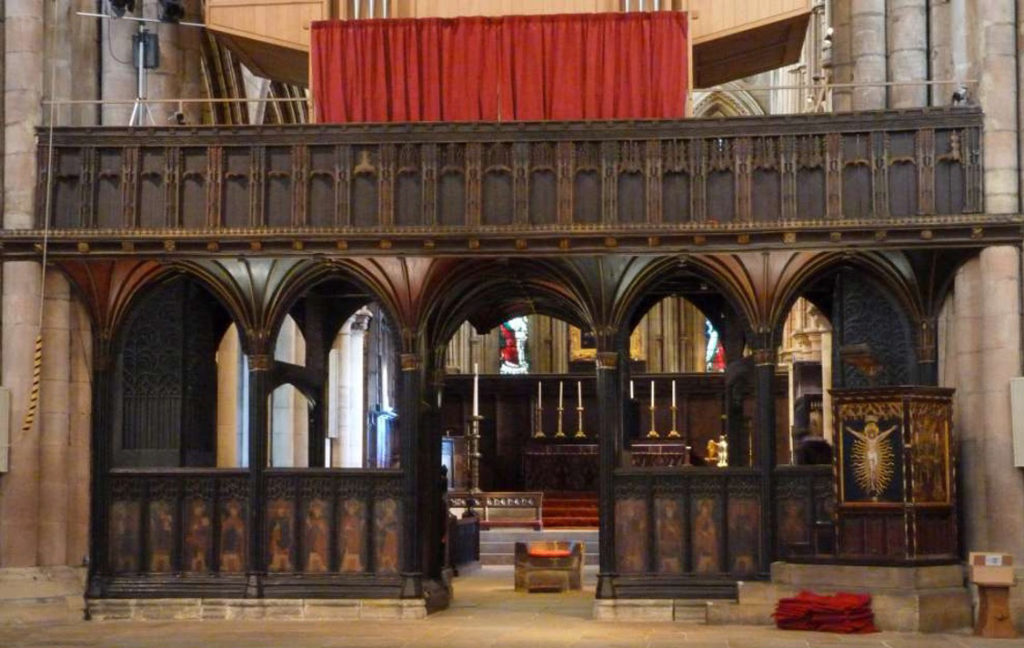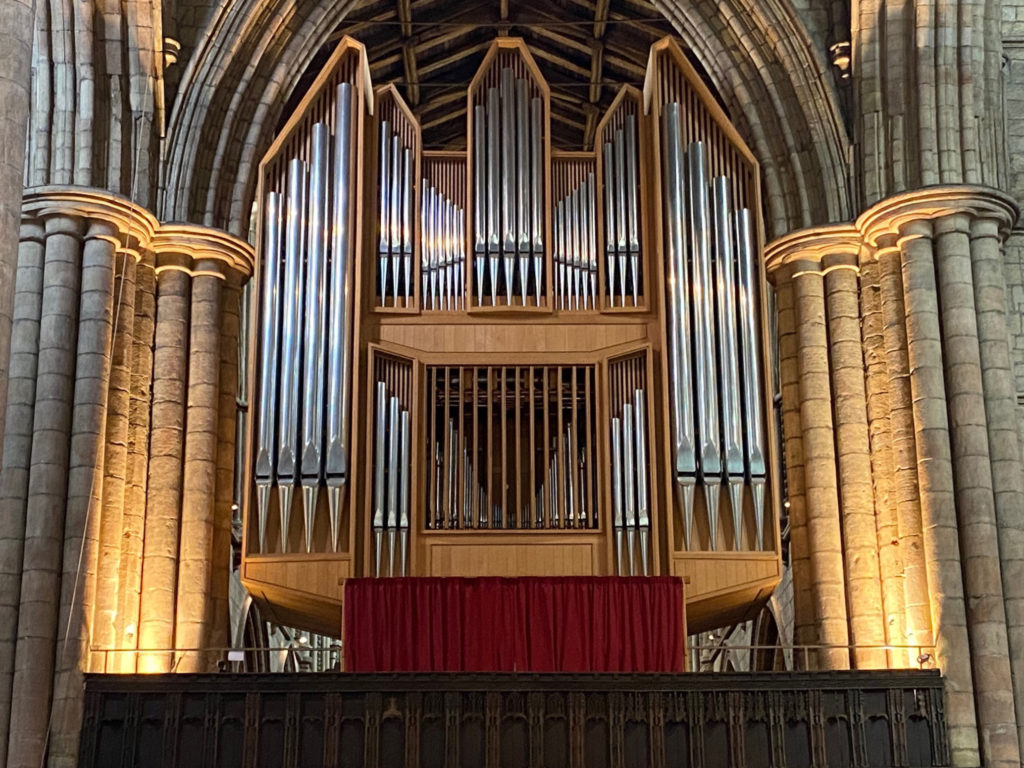Visitor Guide 13: Rood Screen and Organ

For nearly 500 years a massive wooden screen, has cut off the chancel from the crossing, transepts and nave of St Andrew’s Church. This screen at Hexham is in fact a Pulpitum, meant to close off the canons during their worship in the choir.
The loft above the screen was perhaps once the setting for the Rood: an awe-inspiring carved Crucifixion, with life-size or larger figures of a sorrowing mother and disciple at the foot of the Cross. If the Rood itself ever existed, the image was soon discarded. Once, every church had such a Rood, set upon a rood-beam or rood-loft above the screen that separated chancel from the nave. Usually, the screen was an open one, with wide gaps between slender uprights that allowed the congregation to watch and share in the priest’s worship. Only in some greater churches, those served by monks or canons, would there be a more solid and substantial screen.
Thomas Smithson, who headed the Priory from 1491-1524 claims responsibility for this screen. Smithson’s screen was one of the last additions to the church made by the canons as thirteen years after his death the Priory was dissolved by royal command. With no canons, the screen that had shielded their worship was no longer needed to divide them from the common folk.
While the Protestant and puritanical Reformers scorned its Popish imagery, the screen survived and retained some of its array of saints. The saints, though darkened with age, battered and restored can be identified as the bishops of Hexham and Lindisfarne. Further images of saints are also pictured on the screen but were rearranged after the widening of the loft in 1866.

The platform or loft which juts over the Rood Screen has been occupied by four successive organs since 1819. The last and current organ, The Phelps Organ, has held this place in the Abbey since it was installed in 1974 to mark the 1300th anniversary of the Abbey.
The handsome polished oak case of the organ gives it a huge visual appeal, but the organ itself is famous and best known for its enviable singing tone, musical flexibility and sensitive key action.
Today, the organ is used for regular services, weddings, and funerals but is also used for concerts and a regular recital series.
